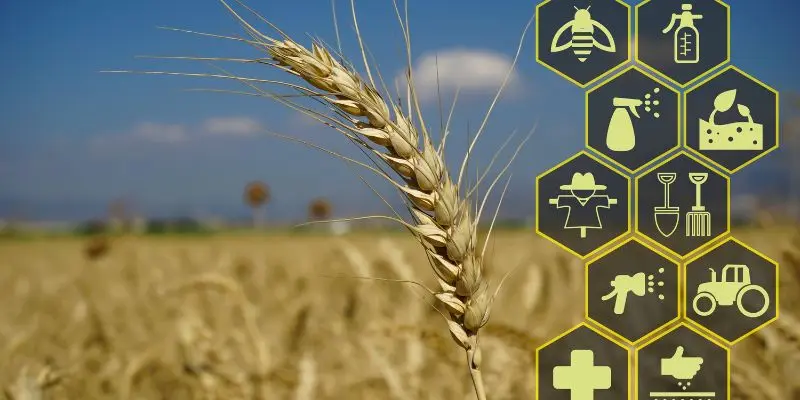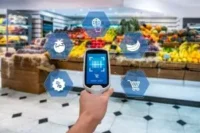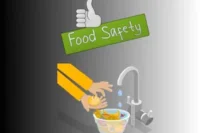AI in Agriculture (AgriTech) . Smart Farming and Food Security
Published: 16 Aug 2025
“AI in agriculture sounds futuristic, but is it really just about robots in fields? Or is it something far more complex—like machines predicting crop diseases before they even happen, or sensors telling farmers exactly when to water their plants? In 2025, with food security becoming a global challenge, AI isn’t just a tool—it’s quietly reshaping how we grow, protect, and deliver food. But how does all this work, and why should farmers, policymakers, and consumers care?”
So, guys, without wasting time, let’s jump into the article to learn AI in Agriculture (AgriTech) Smart Farming and Food Security
2. What is AI in Agriculture?
AI in Agriculture, also known as AgriTech, refers to the use of artificial intelligence technologies—such as machine learning, computer vision, and data analytics—to improve farming efficiency, productivity, and sustainability. It helps farmers make smarter decisions by predicting crop yields, detecting diseases early, optimizing resource use, and enhancing food security through precision farming methods.

- AI in Agriculture (AgriTech): Use of artificial intelligence to improve farming.
- Involves machine learning, computer vision, and analytics.
- Predicts crop yields and detects diseases early.
- Optimizes water, fertilizer, and pesticide usage.
- Supports food security through smarter farming practices.
3. Why AI is Critical for Agriculture
- Global population growth and rising food demand.
- Climate change threats to crop production.
- Labor shortages and need for automation.
- Increasing focus on sustainable and eco-friendly practices.
4. Key AI Technologies Driving AgriTech
AI technologies like computer vision, machine learning, and IoT are revolutionizing agriculture by making farming smarter, faster, and more precise.
These innovations help farmers predict crop health, optimize resources, and boost productivity like never before.
4.1 Machine Learning & Data Analytics
- Predictive analytics for yield forecasting.
- Weather and soil data analysis.
4.2 Computer Vision
- Automated pest and disease detection.
- Crop maturity assessment using drones.
4.3 Internet of Things (IoT) with AI
- Smart sensors for irrigation and nutrient control.
- Real-time farm monitoring systems.
4.4 Robotics & Automation
- Autonomous tractors and harvesters.
- AI-powered drones for field mapping.

4.5 Natural Language Processing (NLP)
- AI chatbots for farmer queries and advisory services.
5. Trending Applications of AI in Agriculture
- Precision Agriculture – AI for planting, watering, and fertilizing with accuracy.
- Crop Health Monitoring – Detecting problems early with computer vision.
- Smart Irrigation Systems – Water-saving AI tools.
- Yield Prediction Models – Helping farmers plan market sales.
- Supply Chain Optimization – Reducing waste from farm to consumer.
- Climate-Resilient Farming – Predicting weather patterns to protect crops.
6. AI for Food Security
- How AI can boost food production to meet global demand.
- Role in reducing post-harvest losses.
- Enhancing nutrition quality through precision farming.
- Early pest & disease detection
- Yield prediction models
- Efficient resource allocation
- Supply chain optimization
- Climate risk mitigation
- Precision farming
7. Challenges of AI Adoption in Agriculture
- High initial investment costs
- Limited technical skills among farmers
- Data privacy and security concerns
- Dependence on internet connectivity
- Integration issues with traditional farming methods
- Lack of region-specific AI solutions
- Resistance to change from conventional practices
8. Future of AI in Agriculture
- AI-integrated vertical farming and hydroponics.
- AI in gene editing for climate-resistant crops.
- Fully autonomous smart farms.
- AI-driven global food distribution networks.
9. F.S Secrets: 4 Pillars That Decide Our Survival
- Availability – Enough food is produced and supplied in markets.
- Access – People can afford and physically reach the food.
- Utilization – Food is safe, nutritious, and properly used for a balanced diet.
- Stability – Food supply and access remain consistent over time.
FAQs about AI in Agriculture (AgriTech Smart Farming and Food Security
Here are some of the most frequently asked questions about the AI in Agriculture (AgriTech Smart Farming and Food Security
Not at all. AI in agriculture includes data analysis, crop health monitoring, weather predictions, and even automated decision-making — robots are just one part of it.
No, AI supports farmers rather than replacing them. It provides tools and insights so farmers can make better, faster, and more profitable decisions.
Not necessarily. While big farms benefit greatly, small farmers can also use affordable AI tools like mobile apps for weather alerts or pest detection.
Yes, AI can detect early signs of disease using images and data, often before they’re visible to the human eye. This helps farmers act early and save crops.
It used to be costly, but now many AI tools are more affordable and even available through government or NGO support programs.
9. Conclusion
AI in Agriculture (AgriTech) – Smart Farming and Food Security combines technologies like machine learning, computer vision, drones, and IoT to monitor crops, predict yields, detect pests, optimize irrigation, and automate farming tasks. These AI-powered tools help farmers make data-driven decisions, reduce waste, improve productivity, and ensure a steady food supply even under climate and market challenges. Understanding the different types of AI in agriculture is essential because each serves a unique role in improving efficiency, sustainability, and resilience — all of which are critical for feeding a growing global population.

- Be Respectful
- Stay Relevant
- Stay Positive
- True Feedback
- Encourage Discussion
- Avoid Spamming
- No Fake News
- Don't Copy-Paste
- No Personal Attacks

- Be Respectful
- Stay Relevant
- Stay Positive
- True Feedback
- Encourage Discussion
- Avoid Spamming
- No Fake News
- Don't Copy-Paste
- No Personal Attacks





